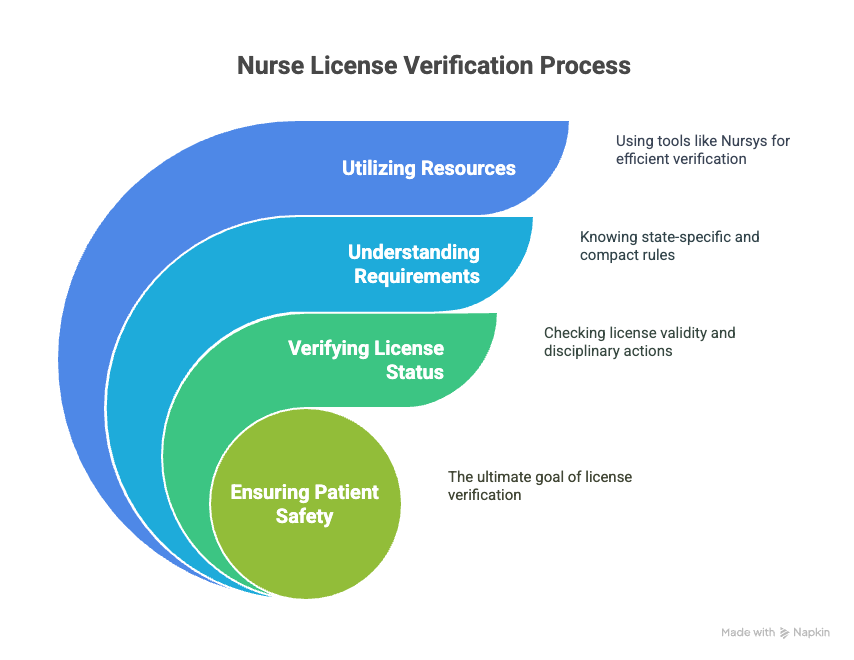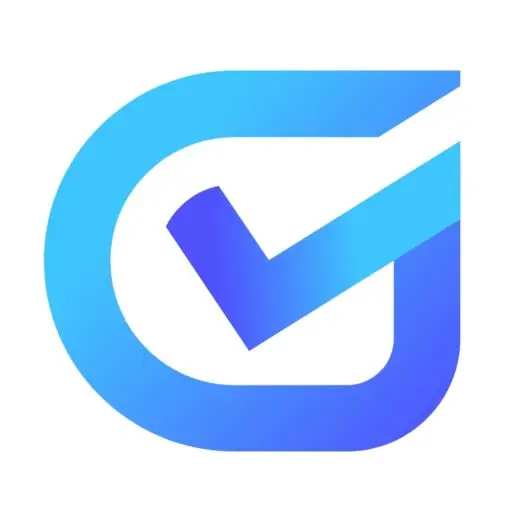In the healthcare field, ensuring that professionals are properly licensed and free from sanctions is crucial. Whether you are an employer, an HR professional, or someone involved in the credentialing process, understanding how to verify healthcare professional licenses is essential. This comprehensive guide will take you through the steps of verifying credentials, checking for professional sanctions, and understanding the broader credentialing process.
Key Takeaways
- Verifying healthcare licenses is essential to ensure patient safety and maintain trust in healthcare systems.
- Primary source verification, such as checking directly with state licensing boards, provides the most accurate confirmation of professional credentials.
- Exploiting online directories like Nursys can support the verification process but should not replace direct checks with issuing authorities.
- Consistently checking the OIG exclusion list and NPDB reports prevents hiring individuals with past sanctions that pose risks to patient care.
- By focusing on these steps, you enhance your facility's reputation and contribute to a trustworthy healthcare environment.
Introduction
Checking licenses and sanctions of healthcare professionals is like maintaining the backbone of quality patient care. You wouldn't want a surgeon without proven credentials, would you? Proper license verification isn't just a box to tick; it ensures patients receive care from qualified individuals. This process involves cross-referencing credentials against official records, scrutinizing them for any red flags. Here, you’ll learn the steps to verify credentials, check for professional sanctions, and understand the entire credentialing process. As someone invested in this field—be it as an HR professional or in credentialing—these insights will help in maintaining the highest standards in healthcare.
Understanding the Credentialing Process
Credentialing in healthcare is more than just paperwork—it's a system critical for patient safety and quality care. It involves verifying that healthcare professionals possess the required qualifications and uphold the standards of the field. This process helps ensure that only competent and licensed individuals are trusted with patient care.
At its core, credentialing includes several essential components. First is license verification, the foundation of credentialing. It confirms that the professional has met all the necessary state requirements to practice. Next, checking for professional sanctions is crucial. This step identifies any disciplinary actions or restrictions that could affect their ability to provide safe care. Lastly, the National Practitioner Data Bank (NPDB) reporting provides a centralized source for checking a professional's history for malpractice or adverse actions.
Compliance with standards set by healthcare organizations and accrediting bodies is non-negotiable. These standards form the benchmark for ensuring consistent and reliable credentialing practices. By adhering to them, you protect patients and maintain trust in the healthcare system. Understanding this process empowers you to contribute to a safer healthcare environment. Are your credentialing practices up to par with these high standards?
EXPERT INSIGHT: In HR, I've learned that credentialing isn't about compliance, it's about trust. Verification of licenses and sanctions is about not filling positions, it's about protecting lives. Every credential we double-check, every sanction we reveal before we hire is a quiet act of protecting the citizens we serve as members of HR teams. It goes unseen, yet it matters a lot. In healthcare and many other sectors, HR is the frontline defense guarding public safety—and that's a responsibility that speaks to me. - Charm Paz, CHRP
How to Verify Healthcare Professional Licenses
Verifying healthcare professional licenses is a critical step in ensuring patient safety and maintaining trust in healthcare systems. As someone responsible for credentialing, knowing how to navigate this process efficiently can make all the difference.
Primary Source Verification
The first step in verifying a license is using primary source verification. This means confirming the accuracy of a license directly with the issuing authority. It eliminates the risk of relying on unverified third-party information. Why is this important? Because relying solely on secondary sources can lead to errors that could put patient care at risk. For instance, if a physician's license status is misrepresented, the consequences could be dire. Primary source verification, while seemingly straightforward, is your most accurate tool.
State License Boards
For most healthcare professionals, state licensing boards hold the key to license verification. Each state has its own board, which keeps records on various healthcare providers. To check a license, visit the respective board's website and follow the instructions for verification. These websites often provide up-to-date status, any disciplinary actions, and expiration dates. Consider the California Medical Board or the Texas Board of Nursing as starting points if you’re verifying licenses in those states.
Online Directories and Resources
Several reputable online directories can aid in verification. Websites like Nursys for nurses or the National Plan and Provider Enumeration System (NPPES) for various healthcare providers offer valuable resources. While these directories provide ease and speed, remember they're supplemental to primary source verification. Utilize them to cross-reference, but not as the definitive source.
The tools are there, but are you making the best use of them? Accuracy and diligence in license verification safeguard both your practice and your patients.
Verifying Nurse Licenses
Checking nurse licenses involves a few distinct steps that are essential for ensuring compliance and safety in healthcare. Each step provides crucial information about a nurse's qualifications and legal standing to practice.
Start by understanding the specific requirements for nursing licenses. Each state has its own board of nursing, which sets the standards and qualifications for licensing. To begin your verification journey, visit the state board's website. Most offer online portals where you can verify a nurse's current license status, including its expiration date and any disciplinary actions.
The Nurse Licensure Compact (NLC) is another key factor. It allows nurses to have a multi-state license, which means they can practice in any member state without needing additional licenses. If the nurse you're verifying is part of the NLC, check both their home state board and the NLC website for their status. This helps ensure they have the proper authority to work in the states covered by the compact.
When it comes to tools and resources, the National Council of State Boards of Nursing (NCSBN) is vital. They provide Nursys, an online verification tool that offers a quick and efficient way to verify nurse licenses and find potential disciplinary actions. Utilizing such resources can streamline your verification process.

Directly checking with official bodies ensures the information is accurate. This reduces the risk of employing an individual with falsified credentials or unresolved sanctions. As someone involved in the hiring or credentialing process, these steps are fundamental to maintaining your organization’s integrity and upholding patient safety. Make it a routine to regularly verify licenses and stay updated on any changes in nursing compact agreements or state regulations. This approach not only safeguards your practice but also enhances trust in your professional judgments.
Checking Professional Sanctions
Performing professional sanctions checks is a crucial step in the hiring process for healthcare professionals. These checks help ensure that those you intend to employ are in good standing and have not faced disciplinary actions that could jeopardize patient safety.
The OIG exclusion list is a critical resource in this process. Managed by the Office of Inspector General, this list includes individuals prohibited from participating in federally funded healthcare programs. Employers must verify that their candidates are not on this list to avoid legal issues and ensure compliance with federal regulations. Checking the OIG exclusion list can prevent potential reputational damage for your organization and protect the quality of care provided to patients.
Another essential component is NPDB reporting. The National Practitioner Data Bank collects information about medical malpractice payments and adverse actions related to healthcare practitioners. When you access this database, you can verify whether a candidate has any history that might raise concerns. This vetting helps ensure only qualified and trustworthy professionals join your team.

Have you ever faced an unexpected issue with a new hire due to unverified sanctions? Ignoring this step can lead to significant liability. Therefore, integrating these checks into your hiring protocol is not just a procedural requirement—it’s a preventative measure for your organization’s integrity and patient care.
Healthcare License Lookup
When conducting a healthcare license lookup, start with understanding the state-specific requirements. Each state has its own licensing board, responsible for maintaining a database of professionals authorized to practice in various healthcare fields. Access these databases online for the most direct and reliable information.
First, identify the professional's full name and, if possible, their license number. Visit the relevant state licensing board's website. Most states offer an online search function where you can input this information to view the license status, expiration date, and any disciplinary actions.
Common challenges include navigating outdated or less user-friendly websites, where search functions might not be intuitive. If results are unclear, contact the board directly for clarification.
Technology is enhancing the speed and accuracy of these lookups. Automated systems now cross-check multiple databases simultaneously, cutting down on time and manual errors. As systems evolve, look for platforms that integrate with your existing HR software, offering a seamless verification experience.
Staying aware of these tools and following a systematic approach ensures you maintain compliance while verifying that healthcare professionals meet all necessary licensing criteria.
Legal and Ethical Considerations
When conducting employment background checks, you must adhere to the guidelines set by the Federal Trade Commission (FTC). This includes obtaining written permission from the person you're checking. Be transparent about what you're doing, and explain how you'll use the information. Following these guidelines ensures compliance and maintains trust.
It's crucial to maintain confidentiality and data protection throughout the process. Handle all personal information securely. Limit access to this data only to those who need it. Use encryption tools and secure storage systems to protect against data breaches.
Non-compliance can have serious consequences. Legally, you might face fines or lawsuits. Ethically, failing to uphold proper standards can damage your organization's reputation. A lapse in verification could lead to unqualified individuals gaining positions they shouldn’t hold, putting clients or patients at risk.
Are you confident in your current verification procedures? Ensuring they align with legal and ethical standards protects both the organization and those you serve. Proper verification isn't just a legal obligation; it's a responsibility to uphold the integrity of your field.
Conclusion
Ensuring accurate license and sanctions verification in healthcare is vital. It upholds the standards of quality care and protects patients. As you engage in these processes, consider the impact your diligence has on patient safety. Taking a proactive approach isn't just beneficial—it's crucial. By prioritizing thorough verification, you contribute to a trustworthy healthcare environment. Embrace the opportunity to make a difference. Your actions in credentialing safeguard not only standards but also lives.
Frequently Asked Questions (FAQs)
How do I verify a nurse’s license and sanctions?
Visit the nursing board website for the state where the nurse is licensed. Use their online verification tool to check the current status of the license. This will also show if any sanctions are in place.
What is the difference between license verification and credentialing?
License verification confirms that a nurse has an active, valid license to practice. Credentialing reviews and evaluates the nurse's qualifications, such as education, training, and professional history.
Can I hire someone with a suspended license in another state?
It is generally not advisable to hire someone with a suspended license. They cannot legally practice nursing until their license is reinstated.
What is the NPDB and who can access it?
The National Practitioner Data Bank (NPDB) is a database of information on healthcare professionals. Hospitals and healthcare organizations use it for background checks. Individuals cannot directly access their own records, but they can request a self-query.
How do I check the OIG exclusion list?
Visit the Office of Inspector General's website and use the online search tool to check if an individual is on the exclusion list, which means they are barred from participating in federal healthcare programs.
What steps are involved in nurse credentialing?
Credentialing includes verifying educational background, checking past employment, validating professional references, confirming successful completion of examinations, and assessing any disciplinary actions.
Why is it important to verify a nurse's license?
Verifying a license ensures the nurse is qualified and legally permitted to practice, reducing the risk of employing unlicensed or sanctioned individuals, which can endanger patients and result in legal liabilities.
How often should I re-verify a nurse’s license?
Re-verify licenses before the expiration date and during routine credentialing updates, usually every two years. Regulations may vary by state.
What should I do if a nurse’s license status changes after hiring?
Immediately investigate the change. If the license is suspended or revoked, consider temporarily removing the employee from clinical duties and consult legal counsel for further action.
Can I access someone else’s record in the NPDB?
Access to the NPDB is restricted to authorized entities like hospitals and licensing boards. Unauthorized individuals cannot view records of others. Organizations conducting checks must inform the individual being checked.
Definitions
License Verification
License verification is the process of confirming that a healthcare professional holds a valid, current license to practice in their field. This usually means checking directly with the issuing state licensing board—the primary source—to ensure the professional meets all legal and regulatory requirements. It's one of the first steps in safe and compliant hiring in healthcare.
Credentialing
Credentialing is the method used to confirm that a healthcare professional is qualified to provide medical services. It involves reviewing and verifying education, training, state licenses, and any history of malpractice or disciplinary action. This process helps ensure only competent individuals care for patients. Are you checking credentials thoroughly with each hire?
Sanctions Check
A sanctions check looks into whether a healthcare worker has faced disciplinary actions, including being excluded from federal health programs. For example, the OIG exclusion list flags individuals who are banned from Medicare or Medicaid. Skipping this step can lead to costly penalties and patient safety risks. Do you cross-reference your candidates against this list?
Primary Source Verification
Primary source verification means contacting the original licensing or certifying body—like a state medical board—to confirm a professional's credentials. It's more reliable than searching through secondary databases and reduces the risk of hiring someone with false or outdated information. Are you going straight to the source?
National Practitioner Data Bank (NPDB)
The NPDB is a federal database that tracks medical malpractice payments and adverse actions against healthcare providers. Employers use it to identify patterns of behavior that might impact patient care. Before hiring, it's worth checking this record to avoid bringing in practitioners with serious professional issues. Do you access the NPDB as part of your screening process?
URLs to Referenced Data
- Credentialing and Privileges in Healthcare: https://www.ncbi.nlm.nih.gov/books/NBK519504/
- What Is the Purpose of Credentialing in Healthcare?: https://medtrainer.com/blog/credentialing-in-healthcare/
- Provider Credentialing: Explained: https://www.caqh.org/blog/provider-credentialing-explained
- The Ultimate Guide to Healthcare Provider Credentialing: Everything You Need To Know: https://www.healthstream.com/resource/blog/the-ultimate-guide-to-provider-credentialing-eveything-you-need-to-know
Still have questions?
Get in touch with our team today for a personalized demo and discover how our tailored volume pricing and packages can drive results for your business!
How useful was this page?*
Note: your comments are anonymous. We use them to improve the website. Do not include any personal details.
Visit our FCRA Compliance Tool or leave a message here if you need a response.
From the blog Explore the GCheck Content Hub

Level 2 Background Check for Childcare: Complete Compliance Guide for Employers
17 Dec, 2025 • 18 min read
How to Get a TWIC Card: Complete Application Guide
17 Dec, 2025 • 28 min read
Pharmacy and Medical Delivery Driver Background Checks: Compliance Guide
17 Dec, 2025 • 24 min readThe information provided in this article is for general informational and educational purposes only and should not be construed as legal advice or a substitute for consultation with qualified legal counsel. While we strive to ensure accuracy, employment screening laws and regulations—including but not limited to the Fair Credit Reporting Act (FCRA), Equal Employment Opportunity Commission (EEOC) guidelines, state and local ban-the-box laws, industry-specific requirements, and other applicable federal, state, and local statutes—are subject to frequent changes, varying interpretations, and jurisdiction-specific applications that may affect their implementation in your organization. Employers and screening decision-makers are solely responsible for ensuring their background check policies, procedures, and practices comply with all applicable laws and regulations relevant to their specific industry, location, and circumstances. We strongly recommend consulting with qualified employment law attorneys and compliance professionals before making hiring, tenant screening, or other decisions based on background check information.


